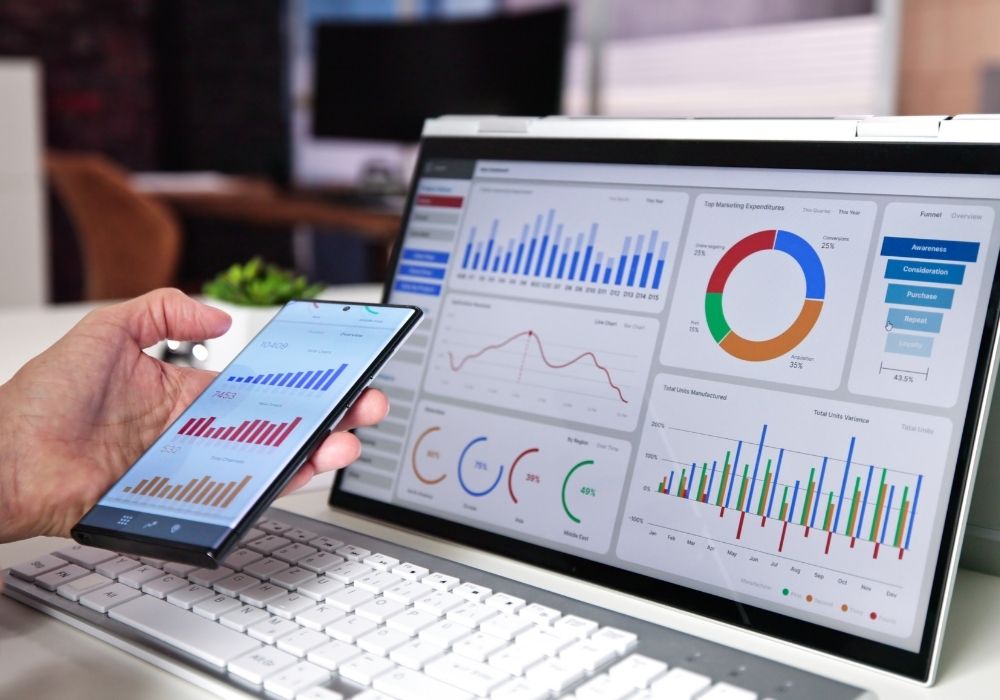A few weeks back, we shared a blog talking about why your business needs digital PR and how it could be game-changing for you. To briefly recap…
“Digital PR campaigns combine the creative element of content marketing and traditional PR, supplemented by the data brought about from careful Search Engine Optimisation and target audience analysis to create engaging campaigns with demonstrable ROI.”
It doesn’t matter if you’re an accountancy firm, a travel agent or a clothing retailer, there’s a digital PR campaign that’s right for you.
What is digital PR strategy?
Digital PR strategy is an overarching plan, which any online PR campaigns or digital PR activity undertaken will contribute to, in order to achieve the strategy objectives, such as brand building and improving SEO performance.
So now that we know what the hell it is, it’s time to start thinking about how to put it into practice. Here’s how to create a digital PR strategy…
How do you create a digital PR strategy?
1. Get to know your audience with personas
For any PR person, getting great media exposure for a client is one of the most gratifying parts of our jobs. However, the pivotal element of any effective PR strategy is knowing your audience.
Before you get started on the first step, be sure you have:
- At least a basic understanding of your ideal target audience
- Completed some competitor research to help you understand who they are (we recommend trying Sparktoro – it delivers great insights into your competitors’ audiences)
So, with your target audience info at hand, the first thing to do is start mapping out:
- Where they go for their news?
- Where they go for the content they love?
- What you think their pain-points are?
- What interests them (this spans everything from Netflix to food)?
- Do they listen to any podcasts in-particular?
- What hashtags they most engage with?
- What themes and topics most interest them?
By analysing where your customer is and why, you can ensure you remain front and centre, sharing your expert views on trending topics and staying relevant.
One of the best ways of really getting under the skin of your target audience is creating personas. It’s something we do for all of our clients at No Brainer and they enable us to get to know your audience on an almost personal level – even allowing us to map out what their daily life is like, so we can intersect a clients brand at the right moments of their day.

Now you have lots of information and detail, let’s start thinking about how you can shape that into a document! Here’s a guideline structure for creating your target personas for Digital PR:
- Give them a name – they’re people after all!
- Add a picture of them (a stock image or icon will work!)
- Basic demographic information i.e. age range, gender etc.
- The competitors they interact with (so you can monitor them)
- The topics they care about – you can create alerts for this on BuzzSumo and even use Google Alerts to help identify newsjacking opportunities
- Outline their pain-points (that you can help resolve better than anyone else)
- The media/news sites they visit most frequently – there’s a good starter for ten on your media list!
- Are there any other digital touchpoints they love? Think Podcasts, YouTube etc.
- Are there any influencers they follow, or even celebrities – that’ll also help you scope your broadcast opportunities
- How do they speak? What language do they use? Is it concise and business-like, or are they bubbling with personality? That’ll help you craft the right tone of voice for each of your channels to best engage with them
- Which channels are they most active on? Is it Instagram, Facebook or maybe Pinterest? You’ll then be able to focus on the right channels for your audience!
- Which devices are they most likely to use?
There’s so much more you can do, but that should give you enough information to really start driving engagement, awareness and, ultimately, content that delivers measurable results. But, by transforming that info into a tangible document, you’ll have something you can share with your team – and also to treat as a bit of a bible for your overall marketing activity to make sure things are kept on track for every channel e.g. SEO as well as PR activity. Understanding the wider context of online PR in digital marketing for your business can help benefit all of the marketing channels you use.
2. Create the right content based on your insights
Through your personas, you’ll soon have a pretty good idea of what sort of content will most interest future customers, which can then be incorporated into your digital public relations strategy.
Tools such as SEMrush, BuzzSumo and ExplodingTopics.com will help you unlock key topics of interest to refine a relevant content strategy. You can then start thinking about the right types of content, for example:
- Articles and helpful guides
- Listicles
- Infographics and data-driven visualisations
- Gamification
- Videos and GIFs
- Podcasts
Whatever route you choose, data will remain at the centre of your campaign; the fun part comes in how you choose to communicate this to your audience. There are plenty of options, but a good place to start is by asking yourself “would I give a s**t about this?”. If the answer is no, we’d recommend you head back to the drawing board!
A fundamental part of digital PR is driving measurable value through quality, relevant backlinks. But it’s important to ensure you’re creating content assets that only “live” on your website – so whatever digital PR campaign you’re doing, has a clear objective and place to go.
Besides creating great content on your website, social media is also an integral part of any Digital PR campaign and can be used to amplify engagement around your chosen topic. Social posts on the platforms your target audience loves can quickly increase reach around specific content, ensuring the right people are reading and reacting to your content.
Even better, if your content sparks debate, divide’s opinion or makes people want to share their view, all of this will help expand reach and spread the word of your brand or products and services.
Top tip: Overlay your content with the topics and themes you know your audience loves for the best levels of engagement. This is your opportunity to be reactive and get creative! Seen an image that’s gone viral? Or a news article that will have a direct impact on your customer base? Respond creatively and see how your audience reacts and engages with your content. Draw inspiration from brands outside of your industry too – if something works well, maybe you can evolve that!
3. Creating your media list and a pitch that journalists can’t refuse
Now we all know there would be no media without the media so identifying who you want to cover your story is vital. This is where Digital PR and traditional PR really come together to make great things happen.
We know that many journalists receive hundreds of emails in their inbox every day, so it’s important to ensure that they read yours and are immediately interested in what you have to say.
- Research your journalists – don’t just send any old crap as this can be damaging to future relationships. Check what they’ve written about previously and make sure that your story is relevant to them.
- Make it personal – reference an article of theirs that you have read or enjoyed or even an article that your story could complement or act as a follow up to. You have to show them why covering this is beneficial to them and their readership.
- Grab their attention – this covers everything from the subject line of your email through to the headline of the article; different outlets write differently, so don’t go for a one size fits all approach. Research into how they talk to their audience and do your best to emulate this.
- Make content they can’t refuse – your research and wonderful content that sits on your website should fundamentally entice the journalist. Attach teaser imagery to your pitch email that they can include, but be very clear on the benefits to their audience if they visit your website. For example, an infographic is great to give to a journalist, but if your website hosts a fully interactive version with loads more detail to it (like a personality quiz) – then they’ll likely include a link because it’s something their audience would expect to see. That’s a win.
Lastly, don’t be put off if you don’t have success the first time! If you’re confident in your story and know that it will spark conversation, be persistent and keep revisiting your approach.
4. Continue building your credibility and brand awareness
Authenticity and trust are essential for consumers (it’s also a search engine ranking signal!), which is why it’s vital to continually work on building this with your audience. Through strategic analysis and audience profiling, your digital PR and content strategy will ensure you’re working with news outlets that you know your audience trusts.
Think about what makes your brand an authority; what are the subject areas where you have expert commentators? Are you passionate about a particular topic that you could take ownership of?
Being subject matter experts in your industry will help drive media coverage in relevant outlets as well as important backlinks, you’ll boost your share of voice on key topics while simultaneously establishing yourself as an industry-leading expert, which all helps in building confidence and credibility in your brand.
Digital PR holds you accountable for consistently building on and improving your overall brand awareness. You’ll keep your finger on the pulse of the topics your audience is reading about, reacting and responding and building up credibility.
Twitter is a great resource to keep your finger on the pulse and get yourself out there. Journalists will often put out a rallying call for subject matter experts, specifying topics they’re looking for a comment on – so get following!
5. Measure your success by setting clear objectives and KPIs
Objectives, KPIs and goals are a huge part of implementing a great digital PR campaign. Everyone needs to know what they are aiming for and also have a clear understanding of what ‘good’ looks like.
Do you want to raise general brand awareness? Increase sales of a specific product? Or maybe your focus is on bringing people to your website. Is your digital PR part of a wider strategy to support ecommerce SEO for example?
How do you measure digital PR success?
No matter your overall objective, it’s important to measure success to help you learn from previous experience and continually evolve your strategy. The objectives and PR activity will help decide the best metrics and KPIs to use, these might include:
Checking your Google Analytics, it will show you how and from where your web traffic is coming, how long they’re staying and what pages they’re visiting most. Has your coverage provided any referral traffic?
For example, if your goal is an increase in brand awareness, an uplift in web traffic, visitors to your social media pages and followers will also provide a decent indication of how well your campaign has performed. A sustained increase in brand search visibility shown in Google Search Console can also correlate with digital PR activity and indicate how well a campaign has performed on that front.
Check your online coverage for any new links from authoritative websites. Does this correlate with any ranking changes, traffic increases or more visibility shown in Search Console?
Were there any social media elements to your campaign that can show how many people you’ve reached or engaged with on these platforms?
Track any links used in the campaign using UTM parameters. What have users who have visited the site via these links done? Have they engaged with your site in any meaningful way?
Whatever your objective, make sure you know how you’re going to measure your success before you launch any online PR campaign so that you can make the most of your activity and take important learnings into the next phase of your strategy!
Key takeaways
Digital PR strategies unlock bigger and better opportunities for your brand, ensuring you’re reaching the right audience rather than your existing customer base. Don’t fall into the trap of producing content that will only relate to your ‘ideal’ customer, because the likelihood is that your customers are always evolving – which is why continually assessing data and implementing learnings based on this is vital.
By sharing your expert views with the right journalists at the right titles, you can work on providing them with demonstrable value (imagine positioning yourself as a knowledgeable resource for them). In giving them on-site assets that they have no choice but to link to, you’ll be helping to make sure your brand is in front of the right people.
By truly getting to know your audience, creating content you know will resonate well with them and building links in the right publications, you’ll be well on your way to firmly establishing yourself as a credible source of information.








